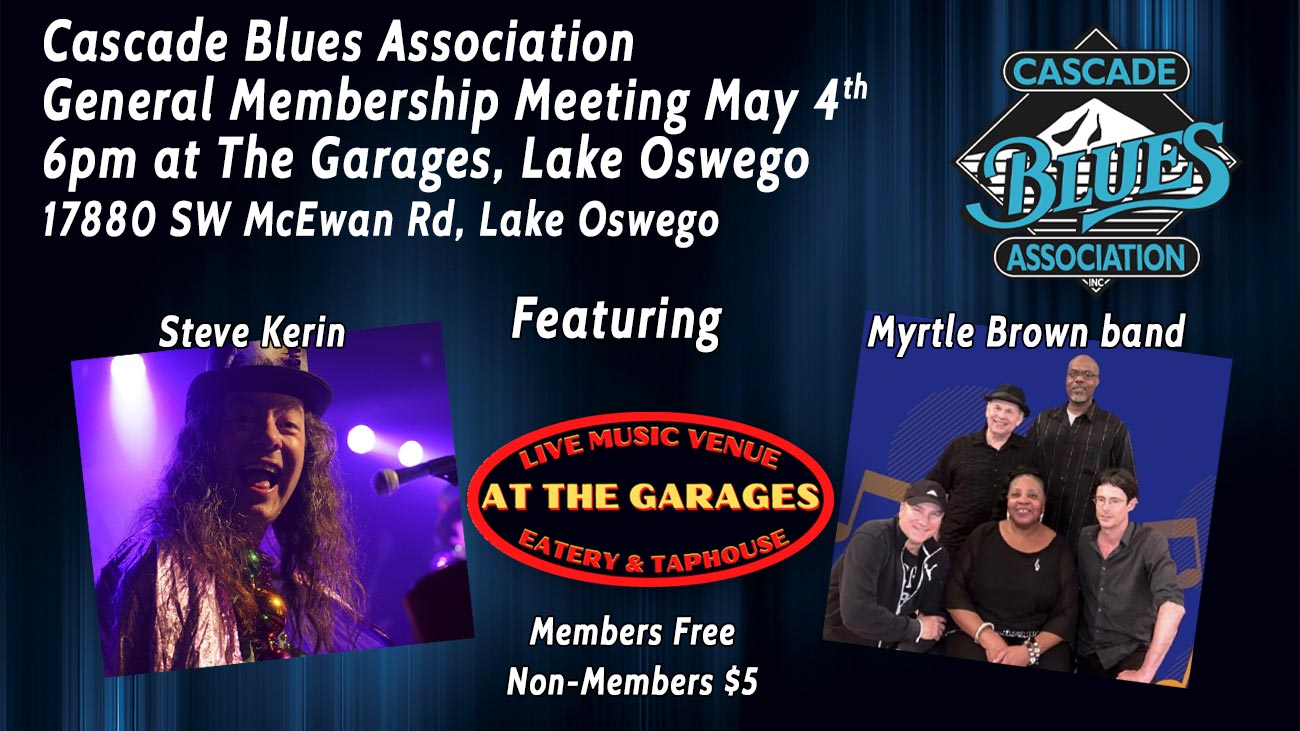
June 2022 General Membership Meeting
June 2022
General Membership Meeting
WEDNESDAY June 1st, 6PM -7:30PM
Join us at the Garages, Lake Oswego on June 1 for the next Cascade Blues Association member meeting beginning at 6pm. First up musical guests this month are The Chris Stone…

Key Events – Save the Date! 2022 May
Key Events - Save the Date! 2022 May
May
5/1 - Booker T. Jones Alberta Rose Theater
5/5 - St Paul & The Broken Bones, Crystal Ballroom
5/10—Christone “Kingfish” Ingram, Roseland Theater
5/21 - David Bromberg Aladdin Theater
5/24…

Richard Wilkins – Life’s For Livin’
Richard Wilkins
Life's For Livin'
Self release
Review by Anni Piper
Originally from sunny California, Richard Wilkins has made Portland his home and obviously rode the rails into the blues scene here in a big way. Wilkins is a vocalist, bassist,…

Keeping the Blues Alive
Keeping the Blues Alive
by Kirk Andersen
So many cities around the United States have been touched by the history of music and the musicians and businessmen and women who propelled it. Unfortunately, either due to politics, commercial pressures/buyouts…

Gorge Blues and Brews 2022
Gorge Blues and Brews 2022
GORGE BLUES & BREWS FESTIVAL IN STEVENSON, WASHINGTON RETURNS FROM PANDEMIC!
Mark your calendars now for Friday and Saturday, June 24-25, when Gorge Blues & Brews Festival hits the Skamania County Fairgrounds…

Ramblings May 2022
Ramblings May 2022
by Anni Piper
We are grateful to everyone for attending the celebration of life for our late president emeritus, Greg Johnson, and acknowledging his contribution to our community in such a meaningful way. Best wishes to Greg’s…

May 2022 General Membership Meeting
May 2022
General Membership Meeting
Wednesday May 4th, 6pm -7:30pm
AT THE GARAGES, 17880 SW MCEWAN RD, LAKE OSWEGO
The next Cascade Blues Association member meeting will be held At The Garages, Lake Oswego on May 4 at 6pm. The opening act is…
